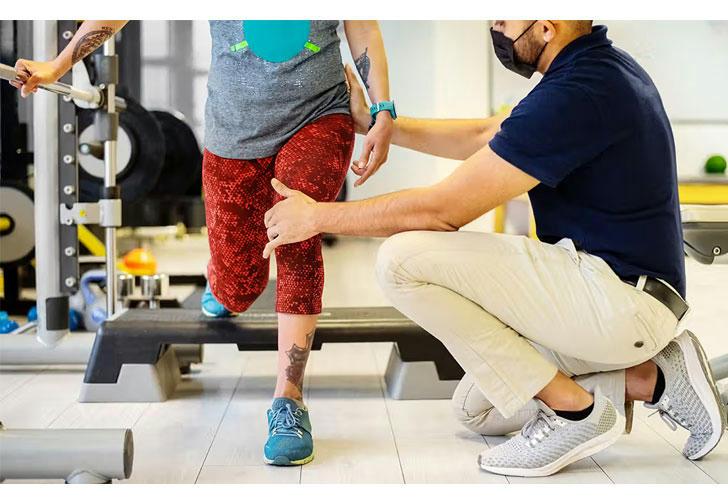Effective Daily Rehabilitation Training for Individuals with Cerebral Palsy
Cerebral palsy (CP) is a group of neurological disorders that affect movement, muscle tone, and motor skills. While there is no cure for CP, effective rehabilitation can significantly improve the quality of life for individuals with this condition. This article outlines practical strategies for daily rehabilitation training, suitable exercises, and recommended products to support individuals with cerebral palsy in their journey toward improved mobility and independence.

Understanding Rehabilitation for Cerebral Palsy
Rehabilitation for individuals with cerebral palsy focuses on enhancing physical abilities, improving coordination, and promoting independence in daily activities. A personalized approach is essential, as the severity of CP can vary widely among individuals. Rehabilitation programs should be tailored to address specific needs, goals, and abilities.
Key Components of Daily Rehabilitation Training
1. Stretching Exercises
Stretching is crucial for maintaining flexibility and reducing muscle tightness. Regular stretching helps prevent contractures (permanent tightening of muscles and tendons) and improves overall mobility.
Recommended Stretches:
Calf Stretch: Stand facing a wall and step back with one leg while keeping the heel on the ground. Hold for 20-30 seconds.
Quadriceps Stretch: While standing, pull one foot towards your buttocks to stretch the front thigh. Hold for 20-30 seconds.
2. Strengthening Exercises
Strengthening exercises help improve muscle control and overall strength, which is vital for better mobility.
Recommended Exercises:
Resistance Band Exercises: Use resistance bands to perform various exercises targeting different muscle groups.
Weight Training: Light weights can be used to strengthen specific muscles under the guidance of a therapist.
3. Balance and Coordination Activities
Balance training enhances stability and coordination, reducing the risk of falls.
Recommended Activities:
Standing on One Leg: Practice standing on one leg for as long as possible to improve balance.
Balance Beam Walking: Use a low balance beam or tape on the floor to practice walking in a straight line.
4. Gait Training
Gait training focuses on improving walking patterns and stability.
Recommended Techniques:
Treadmill Training: Walking on a treadmill with body weight support can help improve gait mechanics.
Walking Aids: Use walkers or crutches as needed to promote safe walking.
5. Fine Motor Skill Development
Fine motor skills are essential for daily tasks such as writing or buttoning clothes.
Recommended Activities:
Grasping Objects: Practice picking up small objects like marbles or beads using fingers.
Hand-Eye Coordination Games: Engage in activities that require catching or throwing balls to enhance coordination.
6. Aquatic Therapy
Water-based exercises provide resistance while reducing joint stress, making it an excellent option for individuals with CP.
Activities such as swimming or walking in water can improve strength and flexibility.
7. Use of Assistive Devices
Incorporating assistive devices can enhance mobility and independence.
Devices such as orthotics (braces) or specialized seating systems can provide support during activities.
Recommended Products for Rehabilitation
1. Resistance Bands
Example: TheraBand Resistance Bands
These bands come in various resistance levels and are perfect for strength training exercises at home.
2. Balance Trainer
Example: BOSU Balance Trainer
This versatile tool can be used for balance exercises, core strengthening, and stability training.
3. Aquatic Exercise Equipment
Example: Water Dumbbells
These are great for aquatic therapy sessions, providing resistance while being easy to handle in water.
4. Fine Motor Skill Toys
Example: Melissa & Doug Wooden Puzzles
Engaging puzzles that promote fine motor skills and hand-eye coordination through play.
5. Stationary Bike
Example: Exerpeutic Folding Magnetic Upright Bike
A stationary bike allows individuals with limited mobility to engage in cardiovascular exercise safely at home.
6. Yoga Mat
Example: Liforme Yoga Mat
A high-quality mat provides comfort during stretching and balance exercises, making it easier to practice safely at home.
7. Physical Therapy Apps
Example: PT Timer App
This app helps track rehabilitation exercises, set reminders, and monitor progress over time.
Conclusion
Daily rehabilitation training is essential for individuals with cerebral palsy to enhance their physical abilities and improve their quality of life. By incorporating stretching, strengthening exercises, balance activities, gait training, fine motor skill development, aquatic therapy, and the use of assistive devices into their routines, individuals with CP can make significant strides toward greater independence.
The recommended products provide valuable tools to support these efforts at home or during therapy sessions. Always consult with healthcare professionals or physical therapists when developing a rehabilitation program tailored to individual needs and capabilities. With consistent effort and the right resources, individuals with cerebral palsy can achieve meaningful progress in their daily lives.
